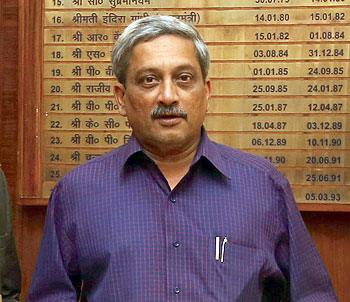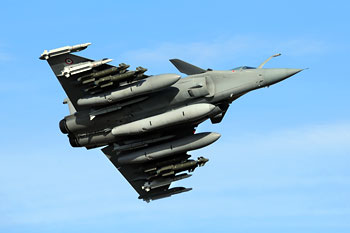INDIAN ARMED FORCES CHIEFS ON OUR RELENTLESS AND FOCUSED PUBLISHING EFFORTS

The insightful articles, inspiring narrations and analytical perspectives presented by the Editorial Team, establish an alluring connect with the reader. My compliments and best wishes to SP Guide Publications.

"Over the past 60 years, the growth of SP Guide Publications has mirrored the rising stature of Indian Navy. Its well-researched and informative magazines on Defence and Aerospace sector have served to shape an educated opinion of our military personnel, policy makers and the public alike. I wish SP's Publication team continued success, fair winds and following seas in all future endeavour!"

Since, its inception in 1964, SP Guide Publications has consistently demonstrated commitment to high-quality journalism in the aerospace and defence sectors, earning a well-deserved reputation as Asia's largest media house in this domain. I wish SP Guide Publications continued success in its pursuit of excellence.
Oxygen for the Indian Air Force
The statement by the Minister of Defence that the deal for 36 Rafale fighter jets will bring some "oxygen" to the Indian Air Force, accurately reflects the predicament the IAF is currently in.
 |
By Air Marshal B.K. Pandey (Retd) Former Air Officer Commanding-in-Chief of Training Command, IAF |


The somewhat unexpected announcement on April 10, 2015 by Prime Minister Narendra Modi while on a state visit to France, pertaining to the purchase of 36 Rafale combat jets from Dassault Aviation of France through a direct deal between the two governments, has surprised many and has managed to confused some. But to the Indian Air Force (IAF) it has come as music to its ears!
As per reports that appeared in the media recently, a Parliamentary Consultative Committee on Defence expressed serious concern on the rapidly dwindling size of the combat aircraft fleet of the IAF which as per the Committee, had reduced to around 25 squadrons.
This is an alarming all time low against the currently authorised strength of 39.5 squadrons. The Government has also approved the strength of the fleet of combat jets in the IAF to go up to 42 squadrons by 2022. Earlier on it had been assessed that to fight a war on two fronts simultaneously, the IAF should ideally have 60 squadrons.
As per data available in the public domain, the strength of the combat fleet of the IAF is presently down to 31.5 squadrons. The breakdown is as under:
| Type of Aircraft | Number of Squadrons |
| Su-30 MKI | 10 |
| MiG-29 | 03 |
| Mirage 2000 | 2.5 |
| MiG-21 Bison | 06 |
| Jaguar | 05 |
| MiG-27 | 05 |
| Total | 31.5 |
Of the combat aircraft listed above, the MiG 27 fleet is already obsolete and should have been retired.
But given the declining strength of the combat fleet, the MiG-27 squadrons are being retained for another two years at the most. So would be the case with the MiG-21 Bison fleet. In all likelihood this fleet would also be retired by 2019 if not earlier. The number of Su-30 MKI squadrons that is currently at ten, is expected to reach its full strength of 15 squadrons (272) aircraft, by 2019 if Hindustan Aeronautics Limited factory at Nasik adheres to the committed time lines. However, slippage in delivery should not come as a surprise and the IAF ought to be prepared for it.
As for the latest deal with France for 36 Rafale aircraft, delivery of these aircraft is expected to be completed within two years i.e. by 2017 as stated by the Minister of Defence Manohar Parrikar. This is the year in which a number of combat aircraft will be due for retirement. The IAF therefore is literally gasping for breath with its fighter fleet shrinking rapidly leading to crippling erosion of combat capability. Induction of the 36 hopefully new Rafale aircraft, will provide only temporary relief to the IAF. There is imperative need to build up the strength of the Rafale fleet progressively to at least 126 aircraft if not more through Government-to-Government deal now that the MMRCA tender has been aborted.
The statement by the Minister of Defence Manohar Parrikar that the deal struck with France for purchase of 36 Rafale fighter jets will bring some "oxygen" to the Indian Air Force, is a fairly accurate summation of the predicament the IAF is currently in.





